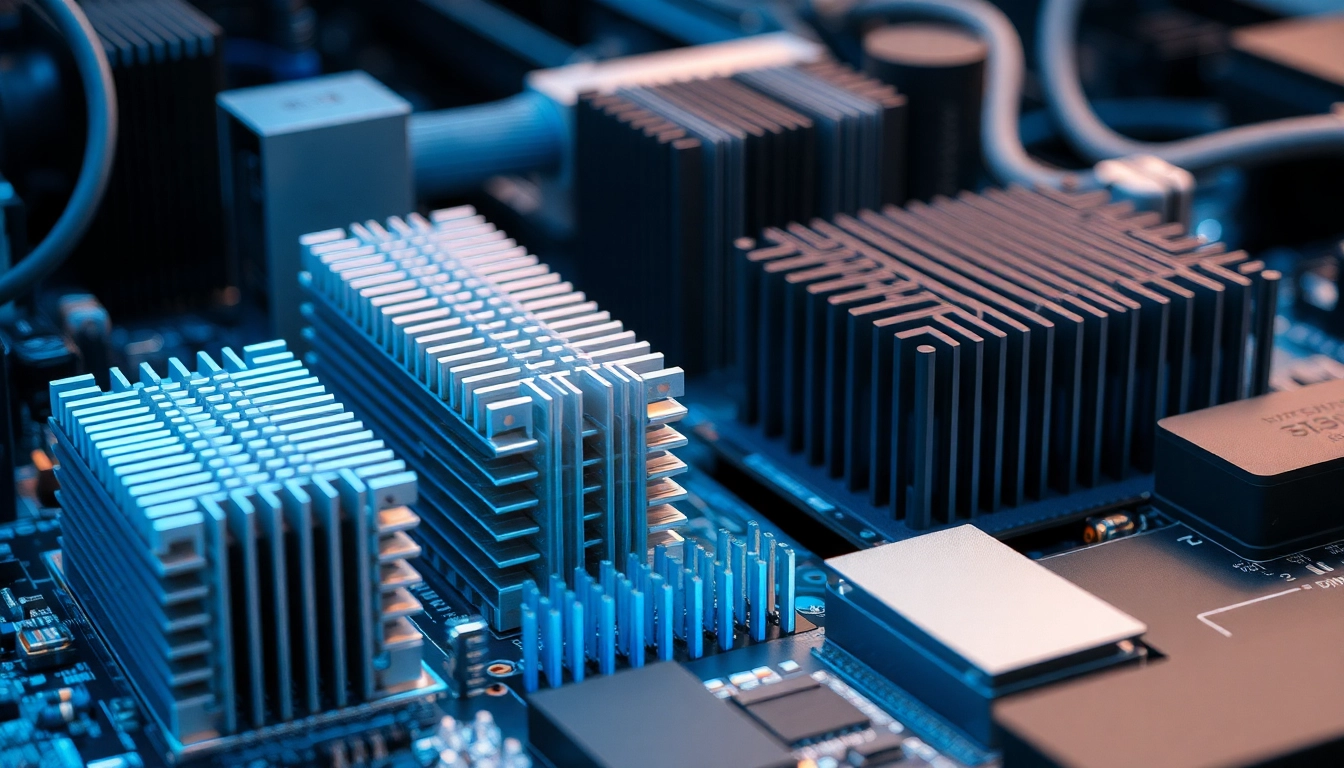Understanding Thermal Management Materials
In an era where electronics are becoming increasingly compact and powerful, the need for effective thermal management is more critical than ever. Thermal management materials (TMM) play a pivotal role in ensuring electronic components operate within safe temperature ranges, thereby enhancing performance and extending lifespan. These materials, which include a variety of products designed to dissipate heat efficiently, are essential in various applications, from consumer electronics to industrial machinery. By utilizing high-quality thermal management materials, manufacturers can mitigate the risks associated with overheating and ensure device reliability.
What Are Thermal Management Materials?
Thermal management materials encompass a broad category of materials engineered to conduct heat away from electronic components, thereby controlling temperatures effectively. They are designed to optimize heat transfer, minimize thermal resistance, and manage heat dissipation. These materials can exist in various forms, including films, pads, gap fillers, greases, and epoxies, each serving distinct applications within electronic devices.
The Role of Thermal Interface Materials (TIM)
Among the many types of thermal management materials, Thermal Interface Materials (TIM) hold a central position. TIM are used to fill microscopic gaps between hot components, such as CPUs or GPUs, and heat sinks. These gaps can accumulate air, which is a poor conductor of heat. By eliminating air gaps, TIM enhances the thermal connection, improving heat transfer rates significantly. Various materials, including thermal pastes, gels, and sticky pads, are employed, each varying in thermal conductivity and application method.
Common Applications in Electronics
Thermal management materials find applications across numerous sectors. Consumer electronics, such as smartphones and laptops, frequently utilize TIM to ensure that processors remain cool during operation. In automotive applications, these materials help manage heat in electric vehicle batteries and electronic control units. Furthermore, in industrial settings, they are critical in maintaining performance and safety levels in machinery and control systems that generate significant amounts of heat.
Types of Thermal Management Materials
Heat Sinks and Heat Spreaders
Heat sinks are physical structures that absorb and disperse heat generated by electronic devices. Typically made from metals with high thermal conductivity, such as aluminum or copper, heat sinks often feature fins or other extended surfaces to increase their area for heat dissipation. Heat spreaders, on the other hand, help distribute heat evenly across components, ensuring no single part becomes too hot. Together, these devices help manage thermal loads effectively in electronic systems.
Thermal Pads and Gap Fillers
Thermal pads serve as excellent intermediate solutions for heat dissipation in electronics. They are easy to apply and conform to varying surface profiles, making them ideal for components that may not have a perfectly flat interface. Gap fillers, such as soft thermal gels and silicone-based materials, provide even greater contact and can fill larger voids, further enhancing thermal conduction. Both thermal pads and gap fillers are crucial in modern electronics where form factor and space constraints are common.
Phase Change Materials and Greases
Phase Change Materials (PCMs) are innovative solutions that absorb and release heat based on their melting and solidifying phases. During high-thermal loads, PCMs can absorb excess heat, thereby preventing components from overheating. Thermal greases, often silicone-based, are also extensively utilized in electronic assemblies for their excellent thermal conductivity and ability to fill microscopic spaces between surfaces, enhancing thermal interface performance.
Choosing the Right Thermal Management Solution
Factors to Consider When Selecting Materials
When selecting thermal management materials, several factors must be considered, including thermal conductivity, ease of application, compatibility with the substrates, and long-term performance. High thermal conductivity ensures efficient heat transfer, while materials must be compliant with assembly processes and the physical characteristics of the components they will interface with.
Comparing Thermal Conductivity Ratings
Thermal conductivity ratings are critical in evaluating the effectiveness of thermal management materials. Measured in Watts per meter Kelvin (W/mK), these ratings allow engineers to compare materials objectively. Effective thermal management often relies on selecting materials with higher thermal conductivity—typically in the range of 1 to 10 W/mK for pads, while some specialized TIM can reach 20 W/mK or higher. Understanding these metrics facilitates informed decision-making in material selection.
Case Studies on Effective Heat Management
Numerous case studies highlight the effectiveness of superior thermal management strategies. For instance, in the automotive industry, effective use of thermal pads and TIM has significantly improved the thermal management of battery packs, thereby enhancing overall vehicle performance and safety. Another case is seen in consumer electronics, where companies have implemented innovative TIM formulations that not only improve cooling but also reduce weight and size, meeting contemporary consumer demands for compact devices.
Challenges and Solutions in Thermal Management
Common Issues with Thermal Resistance
Despite advancements in thermal materials, challenges persist. One common issue is thermal resistance, which can be exacerbated by the quality of the interface between materials. Factors such as surface roughness, contamination, and improper application techniques can significantly hinder thermal performance. Addressing such issues requires meticulous attention to detail during the material application process and rigorous testing to ensure optimal thermal paths.
Innovative Solutions for Heat Dissipation
Innovation in thermal management is ongoing, with new materials and technologies emerging. Recent developments in nanotechnology have led to the creation of thermal materials with even higher conductivity, such as graphene composites. Additionally, advancements in manufacturing techniques allow for the production of highly efficient microchannels in heat sinks, enhancing heat dissipation. These innovations provide exciting avenues for improving thermal management across various industries.
Best Practices in Implementation
Implementing effective thermal management solutions involves best practices, such as ensuring comprehensive thermal simulations during the design phase to predict potential hotspots. Deployment of thorough quality control measures during manufacturing can help ensure that TIM and other materials are applied correctly. Furthermore, ongoing education about thermal management practices for engineers and technicians can aid in the optimization of thermal strategies.
The Future of Thermal Management Materials
Emerging Technologies and Materials
The future of thermal management materials looks promising, with ongoing research and development. Emerging technologies such as 3D printing are enabling the production of customized thermal solutions that fit exact specifications. New materials like phase change composites and advanced ceramics are being explored for their potential to revolutionize how heat is managed in high-performance applications.
Impact of Advancements on Electronic Design
As thermal management materials evolve, they significantly influence electronic design. Designers must consider thermal aspects at every stage, from materials selection to final assembly. The integration of sophisticated thermal management solutions allows for more compact designs, enabling higher power density while ensuring reliability and performance.
Looking Ahead: Trends and Predictions
The thermal management landscape is poised to adapt rapidly in response to growing demands for more efficient and higher-performing electronics. Future trends may include the influx of environmentally friendly materials, smart thermal management solutions that utilize IoT for real-time monitoring and control, and increased focus on lightweight materials. Companies willing to innovate and adapt will likely lead the market in offering superior thermal management solutions that meet the needs of tomorrow’s technologies.



